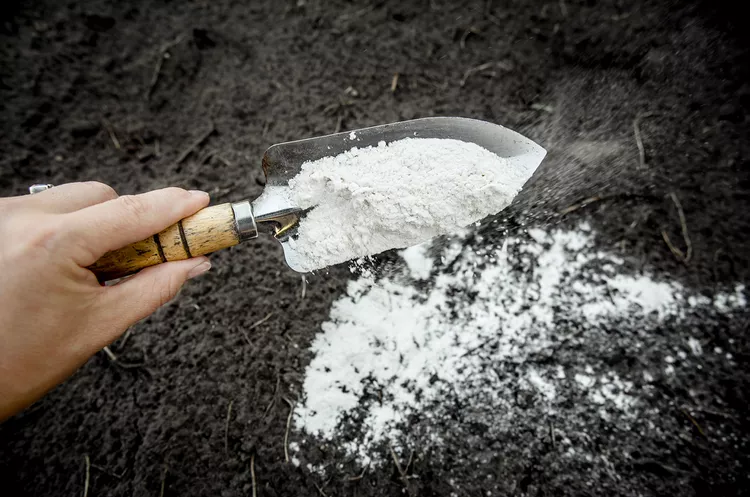In an ideal world, all soil would be perfect for growing every kind of plant. But garden soil often needs to be adjusted, depending on what you want to grow, and garden lime is a common amendment that can give your plants a boost. However, lime isn't something to mix into your soil on a whim or based on the promises on the package at the garden store. Lime actually changes the chemistry of the soil in ways that can help certain plants grow better, but could harm other plants. Here's what you need to know about using garden lime to ensure all your plants thrive.
What Is Garden Lime?
There are different types of lime, and not all are meant for landscaping purposes. Lime intended for garden use is labeled as "garden lime" or "dolomitic lime." Made from ground-up rock, limestone, or dolomite, lime is high in calcium. Dolomitic lime differs from garden lime in that it contains magnesium, in addition to calcium. Lime makes soils less acidic, raising the pH level.
Does My Soil Need Lime?
The short answer is maybe. It all depends on the existing pH of your soil and the kinds of plants you want to grow. Most veggies, fruits, and ornamental plants thrive in soil that has a pH level between 5.5 and 6.5. If your soil's pH is above or below that range, your plants likely won't grow as well, no matter how much fertilizer you add, how diligent you are about watering, or any other way you try to help the plant. You may also want to adjust soil pH when growing bigleaf hydrangeas, which have blooms that can turn pink, purple, or blue depending on pH.
Soil with a pH of 5.5 or below is considered acidic. These are the soils that can benefit from garden lime. As the lime raises the soil's pH level, plant roots are better able to absorb nutrients from the soil. But adding lime to soil with a pH of 6.5 or higher is not a good idea. Increasing the soil pH even more with lime will make important nutrients even harder for plants to get a hold of. Plants growing in soil that has a high pH are often stunted, have yellow leaves, and no fruit.
Test Your Soil pH
The best way to know if your soil will benefit from lime, and how much lime to add to your garden, is to get a soil test that reports the pH level of your soil. Generally, state Cooperative Extension offices provide comprehensive soil tests at reasonable prices. Follow their soil-sample collection directions to get the best results. You could also use a pH meter to get a ballpark number, but the advantage to going with a full soil test is then you'll also get recommendations for the amounts of lime as well as other amendments and nutrients you may want to consider adding at the same time.
How Much Lime Should I Add?
Your soil test should tell you exactly how much (if any) lime to add to your soil. If the soil test indicates an acidic pH and reveals low magnesium levels, add dolomitic lime. If magnesium levels are in the acceptable range, add garden lime. Lime recommendations are often given in number of pounds of lime per 1,000 square feet, so you may want to do some measuring of the area you want to cover before you go shopping for lime.
When Is the Best Time to Add Lime?
If possible, add lime in the fall. It takes time to change the pH of soil so applying lime in fall takes advantage of the winter months prior to the next growing season. In addition, the freeze/thaw cycle helps mix lime into the soil. When adding lime to bare soil, such as a vegetable garden or new lawn, till it into the top 6 inches of soil. Use pelletized lime and a fertilizer spreader to add it to an established garden bed or a lawn. Water the garden or lawn well to move the lime into the soil.




















